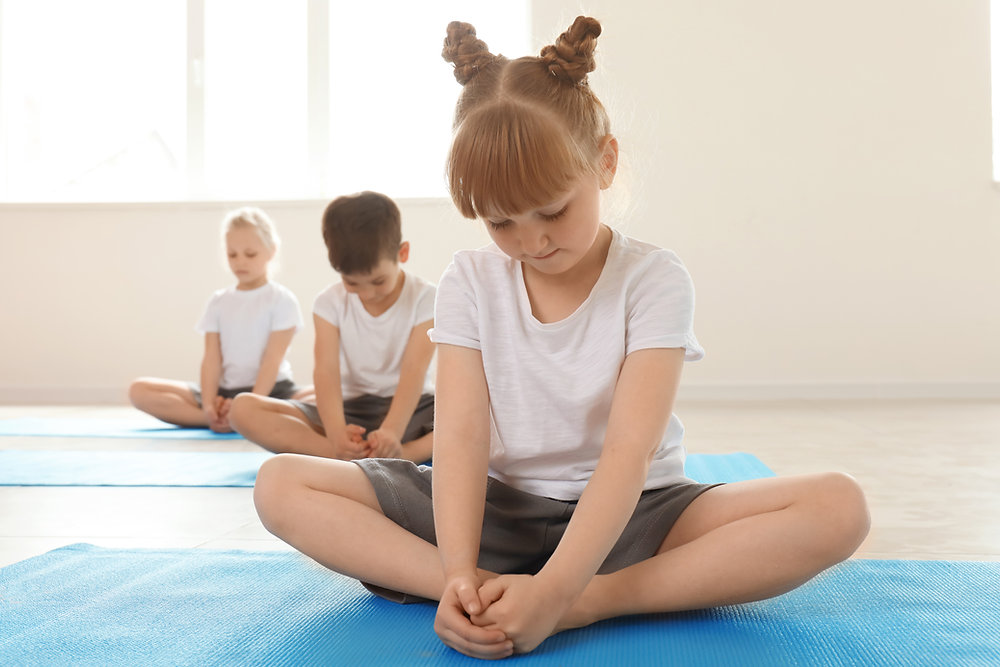Yoga offers numerous benefits for children, from improving flexibility and strength to enhancing concentration and calming the mind. Integrating storytelling into yoga routines can make the practice more engaging and enjoyable for young yogis. Story-driven yoga routines not only capture children’s imaginations but also help them connect with their bodies and minds in a fun and meaningful way. Here’s how to create story-driven yoga
routines for children and some examples to get you started.
1. The Benefits of Yoga for Children
-
Flexibility and Strength: Yoga poses help children develop flexibility, strength, and coordination.
-
Balance and Posture: Practicing yoga improves balance and posture, which can benefit overall physical health.
Mental and Emotional Benefits:
-
Focus and Concentration: Yoga encourages mindfulness and concentration, aiding in better focus and academic performance.
-
Calm and Relaxation: Breathing exercises and relaxation techniques in yoga can help reduce anxiety and promote calmness.
-
Confidence and Self-Esteem: Successfully practicing yoga poses can boost children’s confidence and self-esteem.
-
Empathy and Compassion: Group yoga sessions can foster a sense of community and encourage empathy and compassion.
2. Creating Story-Driven Yoga Routines
Choose a Theme: Select a theme that resonates with children and sparks their imagination. It could be based on a favorite book, a mythical adventure, a journey through nature, or an exploration of different animals.
Develop a Narrative: Create a simple, engaging storyline that guides children through the yoga poses. The story should have a clear beginning, middle, and end, with opportunities for children to act out parts of the story using yoga poses.
Incorporate Yoga Poses: Integrate yoga poses that fit naturally into the narrative. For example, if the story is about a jungle adventure, include poses like Tree Pose (for trees), Cobra Pose (for snakes), and Downward-Facing Dog (for animals in the jungle).
Use Props and Visuals: Enhance the storytelling experience with props, visuals, or music. Simple props like stuffed animals, scarves, or pictures can make the story more interactive and immersive.
Encourage Participation: Invite children to participate actively in the story. Ask questions, encourage them to make sounds, and let them add their own ideas to the narrative.
3. Example Story-Driven Yoga Routines
1. Adventure in the Jungle
Theme: Jungle Adventure Narrative: Children embark on a journey through the jungle, meeting various animals and overcoming obstacles. Yoga Poses:
-
Tree Pose: Pretend to be tall jungle trees.
-
Cobra Pose: Slither like snakes on the jungle floor.
-
Warrior Pose: Stand strong like jungle explorers.
-
Downward-Facing Dog: Walk like jungle animals.
-
Lotus Pose: Rest and meditate like a peaceful jungle pond.
Theme: Ocean Exploration Narrative: Children set sail on a magical boat, exploring the ocean and meeting sea creatures. Yoga Poses:
-
Boat Pose: Balance like a boat on the waves.
-
Fish Pose: Swim like graceful fish.
-
Starfish Pose: Spread out like a starfish on the ocean floor.
-
Shark Pose: Glide through the water like a shark.
-
Child’s Pose: Rest in a safe, cozy shell.
Theme: Journey Through Space Narrative: Children travel through space, discovering planets, stars, and alien friends. Yoga Poses:
-
Rocket Pose: Blast off into space.
-
Star Pose: Shine like bright stars.
-
Moon Pose: Curve like a crescent moon.
-
Alien Pose: Create fun, unique poses as alien friends.
-
Corpse Pose: Float weightlessly in space for relaxation.
4. Tips for Successful Story-Driven Yoga Sessions
Keep It Simple: Ensure that the story and poses are simple and easy to follow, especially for younger children.
Be Creative: Use your creativity to make the story engaging and fun. Feel free to adapt the narrative based on children’s interests and responses.
Encourage Expression: Allow children to express themselves and add their own elements to the story. This fosters creativity and makes the session more interactive.
Focus on Fun: The primary goal is to make yoga enjoyable for children. Keep the tone light and playful, and avoid putting too much emphasis on perfecting the poses.
Incorporate Breathing Exercises: Include simple breathing exercises within the story to help children calm their minds and focus their energy.

Conclusion
Story-driven yoga routines are a fantastic way to introduce children to the benefits of yoga in a fun and engaging manner. By integrating imaginative narratives with yoga poses, children can connect with their bodies and minds while exploring magical adventures.
These routines not only promote physical health but also enhance mental well-being and social skills, making yoga an enriching activity for young yogis.
